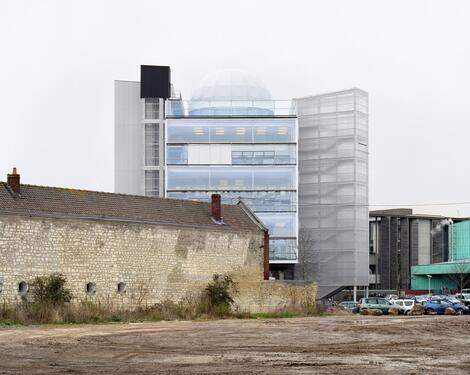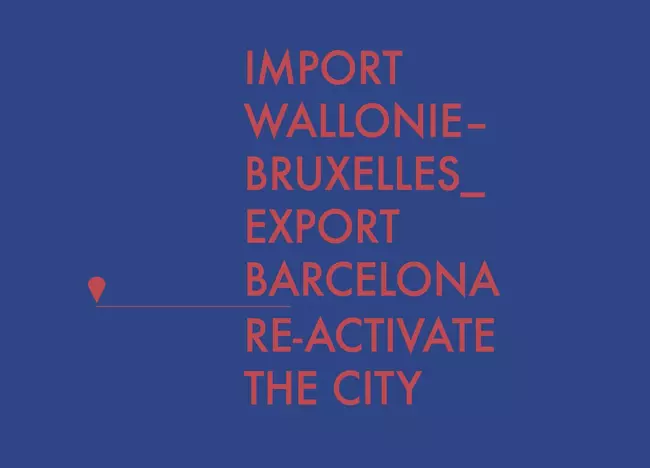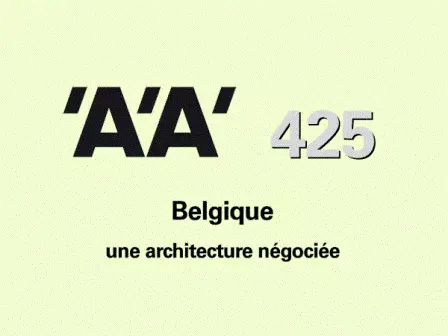- Posts
Published on 04/02/2016
INTERVIEW: Maxime Delvaux, young architectural photographer from Brussels

© Maxime Delvaux WBA – How did your choose to head towards the specific field of architectural photography?
MD – During my studies, I took a great interest in the landscape photography, mainly in the Düsseldorf School (The Bechers, Andreas Gursky, Thomas Struth, Axel Hütte, Candida Höfer, …). During that time, the fate has decided I meet architecture students, with whom I visited a lot of projects I photographed. I started to care about architecture and the desire to work in this field followed naturally.
At the beginning of my career, I received a few advertising orders and then, the occasions in the architectural environment increased. Now, I am a full-time architectural photographer.
WBA – How would you define your personal approach of the architectural photography ?
MD - The architectural photography is essential because I think it remains the most direct way to represent a project . In my opinion, it is the medium which allows best the public to see, «visit» and judge the achievements of an office. The 3D imagery and the drawings show the projects in a more schematic, glorified way.
The core issue is to find a way of photographing the project that would fall within the continuity of the other means of representation of the office, while leaving the possibility of a personal vision.
Generally, I try to show the projects as fairly as possible in terms of reproduction of space and volume. I try not to distort the perception a user can have of it. Instead, I try to aestheticize it with the framing and highlight the moments that I believe are representative of its qualities.
I am also highly attentive to the way a project communicates with its environment and with the different landscape situations it can create.
I hardly ever stage the users, not that I want to dehumanize the pictures but rather to present a lasting vision of the architecture. Besides, when it is justified, I think that representing persons help understand the flow or give a scale. However, I prefer to show the appropriation of a project by the way people invest the place, with furniture for example. In my opinion, it gives a more accurate vision of the everyday life of these projects.
Beyond the offices' orders, I also like to collaborate with architects on broader projects that use the relationship between photography and architecture. Therefore, I am passionate by works on models photography (for example with the Brussels-based office Baukunst or workshops with students).
I also take a huge interest in the use of photography as a tool to design a project, analyse an area, a site, in such a way as to reveal the existing situations, for example.
I love the work of photographers such as Bas Princen or Hélène Binet who produce pictures very composite that feature the relationship between architect and landscape.
WBA – Do you think that architects in Belgium have a special relationship with the architectural photography ?
MD – I don't think there is such a special Belgian feature. Nevertheless, there is in Belgium a will of many offices to think and try to innovate on topics such as the representation of architecture, whatever medium is concerned.
WBA – What are your achievements and international ambitions ?
MD – I took part in a few curatorial projects of international stage, such as the Luxembourg Pavilion at the Venice Biennale of Architecture 2012 ; the Belgian Pavilion at the Venice Biennale 2014 and, in the end of 2015, the exhibition in Paris entrer: Firve archietctures in Belgium.
This year, I received an order from the Villa Noailles in Hyères for an exhibition on skateparks that will open in February. I will also be back in Caen where I produced pictures for the Parisian office Bruther. Finally, I will shortly photograph a project on the Saclay site near Paris.
My goal is to evolve in my own practice and to take pictures of interesting projects, and why not abroad. I think that photographing projects for foreign offices in cities I don't know, or not well, allows me to have a different vision, to bring a new point of view on these projects. It is also interesting because it allows me to discover new methods.
Maxime Delvaux – Find out his profile.
- BilletsAuteur
Audrey ContessePublished on 09/10/2018
-
Allier procédure et processus
"La scène belge est gage de qualité, d’humanisme et de poésie" peut-on lire dans le numéro 425 de l’Architecture d’Aujourd’ hui, dévolu à l [...]
- BilletsAuteur
Emmanuelle BornePublished on 06/07/2018
-
Belgitopie
Faut-il se fier aux expositions internationales, a fortiori à la Biennale d’architecture de Venise, pour appréhender les mouvements de fond et enjeux [...]



